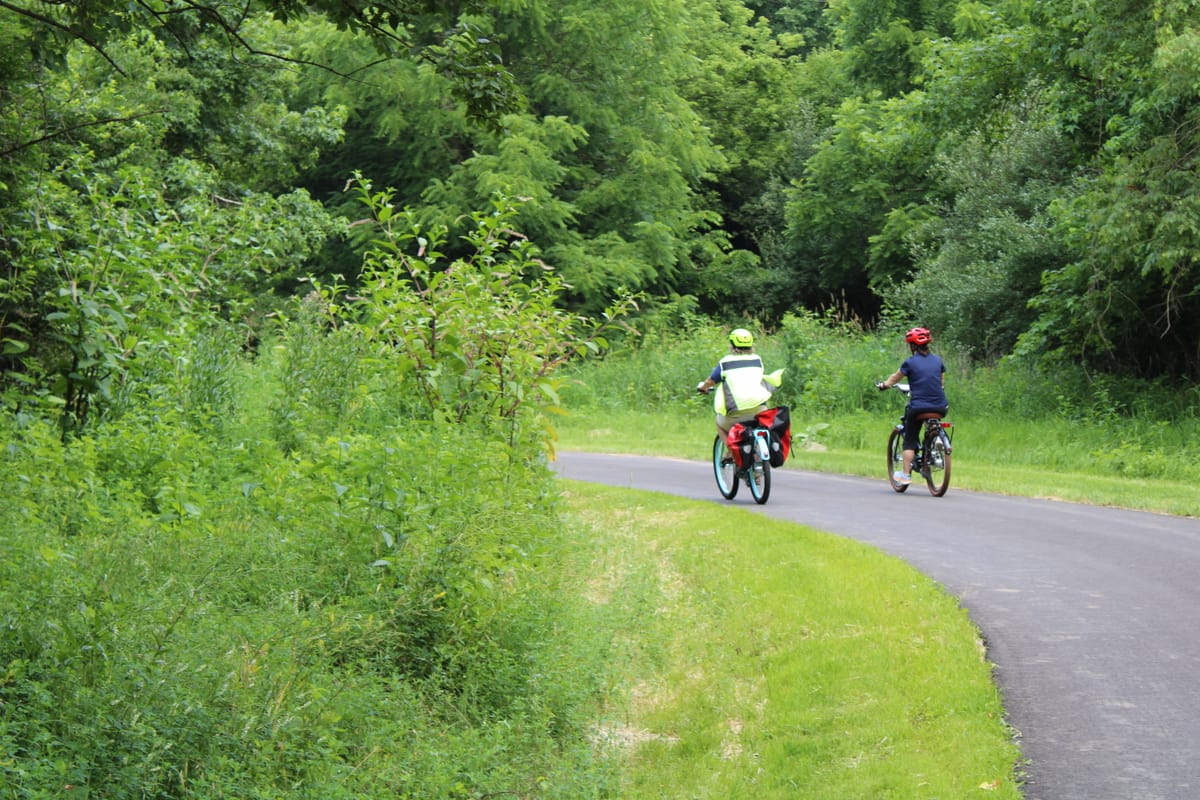Reflections: The Oxford Area Trail
Columnist Allan Winkler writes that the Oxford Area Trail System's local history ties into a broader national story about the policies behind public spaces.

Not long ago, I returned from a trip to the West Coast and woke up early as a result of jet lag. Dawn was about to break, and since I wasn’t going to get back to sleep, I got on my bike and headed to the wonderful Oxford Trail.
Normally I see many people there, walking dogs, walking children, biking, just ambling along. At this early hour, I had the trail all to myself, and found myself reflecting on what a special contribution to Oxford it is.
The development came about when a grassroots group of bicyclists began talking about such a trail in the 1990s. Foresighted folks on City Council pushed for its creation, and eventually work began. We all owe them a huge vote of thanks.
The now 4.3-mile trail has been proceeding in stages. From Peffer Park, a new section of the trail winds one mile toward Talawanda High School. The main trail heads from Peffer Park along Collins Creek, crosses Route 73, continues past the DeWitt Cabin to Bonham Road, and heads toward the Black Covered Bridge and beyond.
A just-opened segment goes up Route 732 to Talawanda Middle School, and will eventually cross the railroad tracks on a new bridge and connect to the path to the high school. Another new segment is under construction along Brookville Road heading toward the Oxford Community Park.
The trail has attracted real community interest. Indeed, a one-day class this semester at the Institute for Learning in Retirement (ILR) will deal with the trail’s background, history and future.
That morning, when I couldn’t sleep, I found myself thinking about the public policy efforts that helped all of us want to make our communities better places to live.
In 1872, Congress made Yellowstone the very first national park in the United States. My sister lives in Pinedale, Wyoming, very close to Yellowstone, and so we have been fortunate to have visited there on numerous occasions. We have marveled at Old Faithful, the famous geyser, and enjoyed staying in a cabin in the woods.
Other parks followed. Theodore Roosevelt, President in the early years of the 20th century, signed legislation establishing five new national parks, and soon there were others. He also pushed through legislation allowing him to designate special sites as historic landmarks. A decade or so later, in 1916, President Woodrow Wilson created the National Park Service, and significant expansion followed.
Franklin D. Roosevelt, President during the Great Depression, was clearly interested in conservation issues as well as reviving the economy. Such agencies as the Civilian Conservation Corps helped bolster the infrastructure of the nation and beautify the landscape, and the dams built out West helped make water resources available to all.
Richard Nixon, not noted as a radical, or even a liberal, President, nonetheless made significant contributions to these environmental efforts. During his tenure, the Clean Air and Clean Water Acts were passed, and the Environmental Protection Agency was created by executive order in 1970.
Over the years, I have deplored political efforts to trim the size of parks and monuments, to hamstring the efforts of environmental agencies. I wish we could all share that our country, in all of its beauty, is something we should all preserve and protect.
As a historian, I can’t help thinking about these things much of the time. But that particular morning, as I biked along the trail, I was content just to feel the wind whistling through my hair, to marvel at the landscaping along the trail, and to be grateful that it was here for us all to use.
Allan Winkler is a University Distinguished Professor of History Emeritus at Miami University, where he taught for three decades. He serves on the Board of Directors for the Oxford Free Press.




